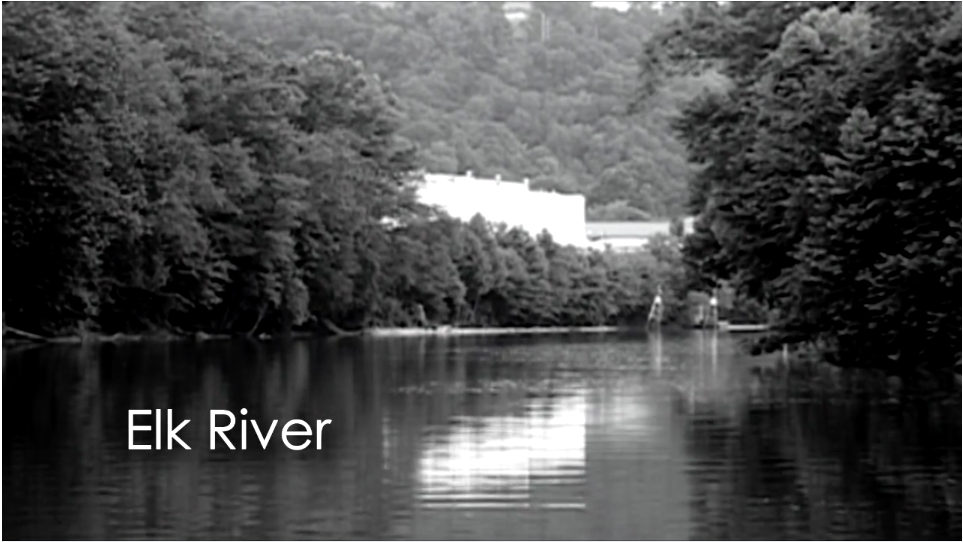by Parker Sterling
From its source in the Allegheny Mountains to its 177 mile stretch and 3,435 feet elevation drop to the mouth at the Kanawha River, the Elk River is considered a “geological marvel” and the longest river wholly contained within the state of West Virginia. It is also a home for some of the best fly fishing in the eastern half of the country, an opportunity for adventure for canoeing and kayaking enthusiasts, and the drinking water source for the state capital in Charleston. On January 9th, 2014, a chemical substance began its escape from a rusted, 75 year old containment tank that sat within a Freedom Industries tank farm perched precariously on a bank of the Elk River where the chemical soon made its way.
Before it was finally reported, publically announced, responded to and stopped, over 10,000 gallons of the chemical substance – called 4-Methylcyclohexanemethanol or MCHM (a clear liquid that smells like licorice and is used by the coal industry to separate useful coal from everything else) – would enter Elk River and the drinking supply of some 300,000 West Virginians, including the governor and state legislature. Though there were no reported fatalities, there was widespread exposure to the chemical before the governor issued a “Do Not Use” order at 6 p.m. on the evening of the spill. The short-term effects reported by a couple hundred residents who ingested and/or were otherwise exposed to MCHM-tainted water included nausea, skin irritation, rash, and vomiting. Some exposed were treated as outpatients. Others were hospitalized. Some residents were without potable tap water for days. Others were without potable tap water for weeks.
Though the CDC and West Virginia Department of Health reports and extensive local and national news stories helped those who were watching understand the pieces of the story as they unfolded and came to light, director Mike Youngren’s new film, Elk River Blues, presents a comprehensive record of the Elk River Spill that includes a battery of interviews, a telling (and chilling) chronology of events, stunning footage, deep investigative journalism, and memorable writing. The journey of Elk River Blues reaches back to the 1671 arrival of the English lead by the Appamatuck, to a gorgeous ride along the river to its confluence with the Kanawha River, to an unflinching exploration of the factors in place that helped create the Elk River Spill.
Youngren’s film begins with an ominous message, “Something bad is in the air, again,” and closes with a final dark and cautionary presage, “If nothing changes, nothing changes.” In between these moments, Youngren’s compassion for the Elk River, for West Virginia, and for the spirit of the Appalachian people is palpable. So much so that when the film posits that the unwritten doctrine of “Appalachian Fatalism” has allowed the people of Appalachia to accept coal-mining disasters and chemical spills as an unchanging and frequently recurring part of their lives that must be accepted, Youngren’s script does not chastise or patronize the Appalachian community for that sentiment. Rather, his film charges that “That fatalism will continue as long as political leaders can use it to not be held accountable” for their actions. In other words, as long as there is something to be gained politically and financially by propelling the notion that life comes and goes quickly in Appalachia, and with little opportunity for justice and redress, then “Appalachian Fatalism” will be silently endorsed, tacitly perpetuated, and the Appalachian community will suffer for it.
Since January 2014, Freedom Industries has filed bankruptcy and several of Freedom Industry employees have faced a number of charges including making false statements under oath, wire fraud, bankruptcy fraud, and environmental crimes. Youngren’s film Elk River Blues is both a damning indictment and comprehensive documentation of the spill for those already versed in this historic environmental tragedy. The documentary is, as well, an excellent introduction to those who are not familiar with the history of the river or the 2014 spill.
One particular moment in the film that stands out for me arrives early on. Youngren creates a montage of video of the Elk River as it flows near Charleston against the backdrop of a now infamous audio recording of a call made to the Department of Environmental Protection by Bob Reynolds of Freedom Industries in January 2014. In this filmic juxtaposition, Youngren’s sense of irony and dramatic storytelling might, if you’re paying attention, make the hairs on the back of your neck stand up, as it did mine. In the end, amazingly enough, though the augurs are clear, there is some optimism in Elk River Blues, which offers near the end of this excellent film, “Maybe this time is different” and a return to normal won’t mean a return to complacency. In the aftermath of the Elk River Spill, maybe this time there will be the kind of systemic change needed to ensure that there is no new “tragedy” on the Elk River or any other river in West Virginia’s “Chemical Valley.” While the Charleston community and the Elk River continue to heal, we can only hope that this time something does change, and for good.
Elk River Blues is available for viewing free at https://vimeo.com/117438040. Contributions to the documentary project are welcomed.
Photo Credit: Screen shot from Elk River Blues, directed by Mike Youngren

